Page is loading ...
Page is loading ...
Page is loading ...
Page is loading ...
Page is loading ...
Page is loading ...
Page is loading ...
Page is loading ...
Page is loading ...
Page is loading ...
Page is loading ...

Training and Operating Instructions
For your safety:
• Please clarify with your general practitioner before you start
with the training, whether or not your health condition allows
you to train with this device. The diagnostic findings should
be the basis for the determination of your training program-
me. Wrong or excessive training can cause damage to your
health.
Safety instructions
Please observe the following instructions for your own
safety:
• The training device must be set up on an appropriate and
firm surface.
• Inspect the connections for firm fitting before initial operation
and additionally after approximately six operation days.
• In order to prevent injuries caused by wrong stress or over-
stress, the training device may only be used in accordance
with the instructions.
• It is not recommended to permanently set up the device in
humid rooms due to the resulting corrosion development.
• Assure yourself regularly that the training device functions
properly and that it is in duly condition.
• The operator is responsible for the safety controls, which
have to be carried out on a regular and proper basis.
• Defective or damaged parts must be exchanged immediately.
Only use original KETTLER spare parts.
• The device may not be used until after repairs are comple-
ted.
• The safety level of the device can only be maintained provi-
ded that it is regularly inspected for damage and wear and
tear.
Table of contents 12
Safety instructions 12
• Service 12
• Your safety 12
Short description 13-15
• Functions and keys 13
• Display range and display 14-15
Quick start (for introduction) 16
• Ready for training 16
• Start of training 16
• End of training 16
• Sleep mode 16
Training 17-18
• without presetting 17
• with presetting 17
•Time 17
• Distance 17
• Energy (KJoule/kcal) 17
• Age input (10-99) 17
• Set alarm signal (yes/no) 17
• Target pulse selection (FA 65%,/FI
75%) 17
• Target pulse input (40-199) 17
• Ready for training 17
• Training interruption/end of training
18
• Resumption of training 18
• Recovery measurement 18
General instructions 19
• System signals 19
• Recovery 19
• Calculation of average value 19
• Instructions for pulse measurement 19
with ear clip 19
with breast belt 19
with hand pulse 19
• Computer errors 19
Training instructions 19
• Stamina training 19
• Load intensity 20
• Extent of load 20
Glossary 20
This sign in the instructions refers to the
glossary, where the respective term will
be explained.
G
12
GB

Short description
The electronics assembly is equipped with functions with
keys and a display range (display) with variable symbols
and graphics.
Quick reference guide
Functions
The four keys will be described in short below.
A detailed application description can be found in the
respective chapters. The names of the function keys in the
chapters correspond to the names used in this quick refe-
rence guide.
SET (press shortly)
Input data are accessed with this function key.
The set data are accepted.
Reset (press SET longer)
The current display is deleted for a reset.
Minus – / Plus +
With these function keys, you can change the values in
the different input data before the start of the training.
- press longer > fast run through the values
- press “Plus” and “Minus” together: value input skips to
OFF
RECOVERY
You can start the recovery pulse function with this function
key.
Pulse measurement
Pulse measurement can be achieved via three sources:
1. ear clip – connect the plug with the plug socket
2. hand pulse – the connection is situated at the back of
the display
3. breast belt (accessories) – please observe the corre-
sponding instructions
display range
display
functions
keys
G
G
13
GB

Training and Operating Instructions
Quick reference guide
Display range/display
The display range (display) informs you about the different
functions.
Distance (DISTANCE)
14-130 [1/min]
1 segment = 2 [1/min]
Pedal frequency (RPM)
recovery function
Pulse (PULSE)
percentage value
comparison actual pulse/ max
pulse
Percentage pulse
target pulse limit exceeded +11
warning signal ON/OFF
display of average value
maximum pulse
warning (blinks) max. pulse +1
value 0.00 – 99.99
Speed
value 0 – 99.9
display of average values
target pulse limit undershot –11
heart symbol (blinks)
pulse display
40 – 199 [1/min]
G
14
GB

clock symbol
value 0:00 – 99:59
Time(TIME)
battery charge
Energy consumption
value: 0 – 9999
odometer value > total k(m)
Battery charge sufficient for
pulse measurement.
Battery charge not sufficient
anymore for pulse measure-
ment, change battery.
Display values
The example displays show the operation as home trainer.
If the revolutions per minute correspond to the example displays
the values for speed and distance are lower for cross trainers.
At 60 min-1 (RPM)
Home trainers: = 21,3 km/h
Cross trainers: = 9,5 km/h
15
GB

Training and Operating Instructions
Quick start (for introduction)
Without special settings
• press a key
Display
• All segments are shortly displayed (segment test).
• The total kilometres are shortly displayed.
Subsequently change to the display “Reading for trai-
ning”.
Ready for training
Display
All segments display “Zero”, except for pulse (if activated)
Start training by pedalling.
Start of training
Display
• Pedal rotation segments, distance, speed, energy and
time increase.
• Pulse (if activated).
Brake setting levels 1-10
• Turn hand wheel to the right to increase the brake
level; turn hand wheel to the left to decrease the brake
level.
Training interruption/end of training
If you interrupt or complete your training, average values
of the last training unit are displayed with the Ø symbol.
Display
• Average values Ø:
pedal rotation segments, speed and pulse (if activated).
• Total values:
distance, energy and time.
Sleep mode
Four minutes after the end of training, the device switches
into the sleep mode. If you press a key, the display starts
again with the segment test, odometer and ready for trai-
ning.
16
GB

Training
1. Training without presetting
• Press a key.
and/or
• Start pedalling (as in “Quick start”).
2. Training with presetting
Display:
“Ready for training”.
• Press “SET”: presetting segment
Time setting (TIME)
• Enter values using “Plus” or “Minus” (e.g. 30:00), con-
firm with “SET”.
Display:
next menu “DISTANCE”.
Distance setting (DISTANCE)
• Enter values using “Plus” or “Minus” (e.g. 7.50), con-
firm with “SET”.
Display:
next menu “ENERGY”.
Energy setting (KJoule/kcal)
• Enter values using “Plus” or “Minus” (e.g. 780), con-
firm with “SET”.
• Select unit KJoule or kcal using “Plus” or “Minus”, con-
firm with “SET”.
Display:
next menu “Age input”.
Age input (AGE)
The input of the age serves for the calculation and the
monitoring of the maximum pulse (symbol HI; warning
signal, if activated).
• Enter values using “Plus” or “Minus” (e.g. 50). Upon
input, the maximum pulse is calculated with the formula
(220 – age), here: maximum pulse of 170. Confirm
with “SET”.
Display:
next menu “Alarm signal”.
Alarm signal, if maximum pulse is exceeded
• Select function using “Plus” or Minus”, confirm with
“SET”.
Display:
next menu target pulse selection “FA 65%”.
Target pulse monitoring FA 65%/FI 75%
• Make your choice using “Plus” or “Minus”.
• Fat burning 65%, fitness 75% of maximum pulse, con-
firm with “SET” (presetting mode completed).
Display:
ready for training with the presetting.
Or
Target pulse input
The input 40 – 199 serves for the determination and
monitoring of a training pulse independent of the age
(symbol HI; warning signal, if activated; no maximum
pulse monitoring). Note that that the age input has to be
set to “OFF”.
• Switch off maximum pulse monitoring using “Plus” and
“Minus”. Display: “AGE OFF”, confirm with “SET”.
Display:
next presetting “Target pulse” (pulse).
• Enter values using “Plus” or “Minus” (e.g. 130), con-
firm with “SET” (presetting mode completed).
Display:
ready for training with the presetting.
• Pedalling
17
GB

Training and Operating Instructions
Decreases with presetting.
• The presetting entries are lost with a “Reset”.
Training interruption/end of training
With less than 14 pedal rotations per minute, the electro-
nics assembly of the device identifies a training interrupti-
on. The achieved training data are displayed. Rotations,
pulse and speed are displayed as average values with the
symbol Ø.
You can switch to the current display using “Plus” or
“Minus”.
The training data are displayed for four minutes. If you do
not press any key nor train during this period of time, the
electronics assembly of the device switches to sleep mode.
Resumption of training
If you resume training within four minutes, the last values
continue to be increased or decreased.
RECOVERY function
Recovery pulse measurement
Press “RECOVERY” at the end of training.
Display
• RECOVERY
The electronics assembly of the device measures your
pulse 60 seconds in reverse.
The current pulse value is saved under “DISTANCE”; the
pulse value after 60 seconds is saved under “KM/H”.
Next to “% Puls”, the difference between the two values is
displayed. From this difference, a fitness mark (in this
example F 1.6) is calculated. The display switches off
after 20 seconds.
“RECOVERY” interrupts the recovery pulse function or the
fitness mark display.
If no pulse is measured in the beginning or at the end of
the reverse counting, the error message “E” is displayed
Comment:
18
GB

General instructions
System signals
Activation of the device
If you activate the device, a signal is emitted during the segment
test.
Presetting
A short signal is emitted, if you reach a presetting like time,
distance and KJoule/kcal.
Exceeding of maximum pulse
If the set maximum pulse is exceeded by one pulse beat, two
short signals are emitted for the time of exceedance.
Recovery
Calculation of the fitness mark (F):
mark (F) = 6.0 –
(
10 x (P1–P2)
)
2
P1
P1 stress pulse P2 = recovery pulse
F1.0 = very good F6.0 = insufficient
Calculation of average value
The calculations of the average values refer to training units in
the past until a reset or the sleep mode.
Instructions for pulse measurement
The pulse measurement starts as soon as the heart in the display
blinks in time with your pulse beat.
With ear clip
The pulse sensor works with infrared light and measures the
variations in translucence in your skin, which are produced by
your pulse beat. Rub your ear ten times strongly to activate the
blood circulation before attaching the pulse sensor to your ear-
lobe.
Avoid disturbing pulses.
• Attach the ear clip properly to your earlobe and look for the
best point for the measurement (heart symbol blinks without
interruption).
• Do not train directly under strong incidence of light, e.g.
neon light, halogen light, spotlight, sun light.
• Completely eliminate any shocks or bounces of the ear sen-
sor and the cable. Always attach the cable with a clip at
your clothing or, even better, at your headband.
With breast clip
Please observe the corresponding instructions.
With hand pulse
An extra-low voltage caused by the contractions of your heart is
registered by the hand sensors and evaluated by the electronics
assembly of the device.
• Always grab the contact faces with both hands.
• Avoid jerky grasping.
• Hold your hands calmly and avoid contractions and rubbing
on the contact faces.
Only one way of pulse measurement is possible: either with ear
clip or with hand pulse or with breast belt. If no ear clip or plug
recipient is located in the pulse plug, hand pulse measurement
is activated. If you insert an ear clip or a plug recipient in the
pulse plug, hand pulse measurement is automatically deactivat-
ed. It is not necessary to disconnect the plug of the hand pulse
Comment:
measurement.
Failures with the training computer
Press the “SET” key for a longer period of time (reset).
Training Instructions
Sports medicine and training science use cycle ergometry,
among other things, for the examination of the functional capa-
bility of heart, circulation and respiratory system.
You can find out whether or not you have achieved the desired
effect from your training after several weeks using the following
method:
1. You manage a particular endurance performance with less
heart / circulation performance than previously
2. You sustain a particular endurance performance with the
same heart / circulation performance over a longer period.
3. You recover more quickly than previously after a particular
heart / circulation performance.
Guide values for the endurance training
Maximum pulse: maximum strain means the reaching of the
individual maximum pulse. The maximum achievable heart rate
is dependant on age.
Here, the following empirical formula applies: the maximum
heart rate per minute corresponds to 220 heart beats minus age
in years.
Example: age 50 years -> 220 – 50 = 170 pulse / min.
Load Intensity
Load pulse: the optimum intensity of load is reached at 65–75%
(see also diagram) of the maximum pulse. This value changes
depending on age.
Extent Of Load
Duration of a training unit and its frequency per week:
The optimum extent of load is attained, if 65–75% of the indivi-
dual heart / circulation performance is achieved over a longer
period.
Empirical Formula:
Beginners should not begin with training units of 30-60 minutes.
The beginner’s training can be planned as follows in the first 4
weeks:
Training frequency Duration of training
daily 10 minutes
2–3 times a week 20–30 minutes
1–2 times a week 30–60 minutes
Pulsediagramm
Fitness and Fat Burner
220
200
180
160
140
120
100
80
Pulse
Age
20 25 30 35 40 45 50 55 60 65 70 75 80
Maximalpulse
(220 minus Age)
Fitnesspulse
(75% of Max.Pulse)
Fat combustion pulse
(65% of Max.Pulse)
90
19
GB

Training and Operating Instructions
It is recommended that you perform approx. 5 minutes of exer-
cises before and after every training unit, in order to warm up
and cool down. There should be a training-free day between
each two consecutive training units, if you prefer training sessi-
ons of 20-30 minutes 3 times a week later on in your training.
Otherwise, there is no reason why you should not train daily.
Training frequency Extent of training session
3 times a week 2 minutes of training
Break of 1 minute for physical exercises
2 minutes of training
Break of 1 minute for physical exercises
2 minutes of training
3 times a week 3 minutes of training
Break of 1 minute for physical exercises
3 minutes of training
Break of 1 minute for physical exercises
2 minutes of training
3 times a week 4 minutes of training
Break of 1 minute for physical exercises
4 minutes of training
Break of 1 minute for physical exercises
3 minutes of training
3 times a week 5 minutes of training
Break of 1 minute for physical exercises
4 minutes of training
Break of 1 minute for physical exercises
4 minutes of training
4th week
3rd week
2nd week
1st week
Glossary
Age
Input for the calculation of the maximum pulse.
Dimension
Units for the display of km/h or mph, KJoule or kcal.
Fat burning pulse
Calculated value of: 65% maximum pulse.
Fitness pulse
Calculated value of: 75% maximum pulse.
Glossary
An accumulation of attempts at explanation.
HI symbol
If “HI” is displayed, the target pulse is too high by 11 beats. If
“HI” blinks, the maximum pulse is exceeded. “HI” monitoring is
always activated.
LO symbol
If “LO” is displayed, the target pulse is too low by 11 beats.
“LO” monitoring is activated, if the target pulse is reached
during training.
Maximum pulse(s)
Value calculated from 220 minus age.
Menu
Display, in which values can be entered or selected.
Pulse
Registration of the heart beat per minute.
Recovery
Recovery pulse measurement at the end of training. The diffe-
rence between start pulse and end pulse of a minute is calcula-
ted. With the help of this difference, a fitness mark is determin-
ed. If you train regularly, the improvement of this mark is an
indication for your fitness progression.
Reset
Deletes the display contents and resets the display.
Target pulse
Input of a particular pulse value, which is be monitored.
20
GB

Date Restpulse Stress pulse Recovery pulse Slope Time Distance Energy consumptionFitness Mark
(min) (km) (Kcal)
Performance table
21
GB
Page is loading ...
Page is loading ...
Page is loading ...
Page is loading ...
Page is loading ...
Page is loading ...
Page is loading ...
Page is loading ...
Page is loading ...
Page is loading ...
Page is loading ...
Page is loading ...
Page is loading ...
Page is loading ...
Page is loading ...
Page is loading ...
Page is loading ...
Page is loading ...
Page is loading ...
Page is loading ...
Page is loading ...
Page is loading ...
Page is loading ...
Page is loading ...
Page is loading ...
Page is loading ...
Page is loading ...
Page is loading ...
Page is loading ...
Page is loading ...
Page is loading ...
Page is loading ...
Page is loading ...
Page is loading ...
Page is loading ...
Page is loading ...
Page is loading ...
Page is loading ...
Page is loading ...
Page is loading ...
Page is loading ...
Page is loading ...
Page is loading ...
Page is loading ...
Page is loading ...
Page is loading ...
Page is loading ...
Page is loading ...
Page is loading ...
Page is loading ...
Page is loading ...
Page is loading ...
Page is loading ...
Page is loading ...
Page is loading ...
Page is loading ...
Page is loading ...
Page is loading ...
Page is loading ...
Page is loading ...
Page is loading ...
Page is loading ...
Page is loading ...
Page is loading ...
Page is loading ...
Page is loading ...
Page is loading ...
Page is loading ...
Page is loading ...

Tabela de rendimento
Data Puls. repouso P 1 P 2 Nível de Tempo DistČncia Consumo Class. Fitness
Puls. Esforćo Puls. recup. esforćo (min.) (km) de energia
91
P
Page is loading ...
Page is loading ...
Page is loading ...
Page is loading ...
Page is loading ...
Page is loading ...
Page is loading ...
Page is loading ...
Page is loading ...

Resultatskema
P1 P2 Tid Distance Fitness-
Dato Restitutionspuls Belastningspuls Hvilepuls Belastningstrin (min.) (km) Energiforbrug karakter
101
DK
Page is loading ...
Page is loading ...
Page is loading ...
Page is loading ...
Page is loading ...
Page is loading ...
Page is loading ...
Page is loading ...
Page is loading ...
Page is loading ...
Page is loading ...
Page is loading ...
Page is loading ...
Page is loading ...
Page is loading ...
Page is loading ...
Page is loading ...
Page is loading ...
Page is loading ...
Page is loading ...
Page is loading ...
Page is loading ...
Page is loading ...
Page is loading ...
Page is loading ...
Page is loading ...
Page is loading ...
Page is loading ...
Page is loading ...
Page is loading ...
Page is loading ...
Page is loading ...
Page is loading ...
Page is loading ...
Page is loading ...
Page is loading ...
Page is loading ...
Page is loading ...
Page is loading ...
Page is loading ...
Page is loading ...
Page is loading ...
Page is loading ...
-
 1
1
-
 2
2
-
 3
3
-
 4
4
-
 5
5
-
 6
6
-
 7
7
-
 8
8
-
 9
9
-
 10
10
-
 11
11
-
 12
12
-
 13
13
-
 14
14
-
 15
15
-
 16
16
-
 17
17
-
 18
18
-
 19
19
-
 20
20
-
 21
21
-
 22
22
-
 23
23
-
 24
24
-
 25
25
-
 26
26
-
 27
27
-
 28
28
-
 29
29
-
 30
30
-
 31
31
-
 32
32
-
 33
33
-
 34
34
-
 35
35
-
 36
36
-
 37
37
-
 38
38
-
 39
39
-
 40
40
-
 41
41
-
 42
42
-
 43
43
-
 44
44
-
 45
45
-
 46
46
-
 47
47
-
 48
48
-
 49
49
-
 50
50
-
 51
51
-
 52
52
-
 53
53
-
 54
54
-
 55
55
-
 56
56
-
 57
57
-
 58
58
-
 59
59
-
 60
60
-
 61
61
-
 62
62
-
 63
63
-
 64
64
-
 65
65
-
 66
66
-
 67
67
-
 68
68
-
 69
69
-
 70
70
-
 71
71
-
 72
72
-
 73
73
-
 74
74
-
 75
75
-
 76
76
-
 77
77
-
 78
78
-
 79
79
-
 80
80
-
 81
81
-
 82
82
-
 83
83
-
 84
84
-
 85
85
-
 86
86
-
 87
87
-
 88
88
-
 89
89
-
 90
90
-
 91
91
-
 92
92
-
 93
93
-
 94
94
-
 95
95
-
 96
96
-
 97
97
-
 98
98
-
 99
99
-
 100
100
-
 101
101
-
 102
102
-
 103
103
-
 104
104
-
 105
105
-
 106
106
-
 107
107
-
 108
108
-
 109
109
-
 110
110
-
 111
111
-
 112
112
-
 113
113
-
 114
114
-
 115
115
-
 116
116
-
 117
117
-
 118
118
-
 119
119
-
 120
120
-
 121
121
-
 122
122
-
 123
123
-
 124
124
-
 125
125
-
 126
126
-
 127
127
-
 128
128
-
 129
129
-
 130
130
-
 131
131
-
 132
132
-
 133
133
-
 134
134
-
 135
135
-
 136
136
-
 137
137
-
 138
138
-
 139
139
-
 140
140
-
 141
141
-
 142
142
-
 143
143
-
 144
144
Kettler 7664-000.A Computer Manual
- Type
- Computer Manual
Ask a question and I''ll find the answer in the document
Finding information in a document is now easier with AI
in other languages
- italiano: Kettler 7664-000.A
- français: Kettler 7664-000.A
- español: Kettler 7664-000.A
- Deutsch: Kettler 7664-000.A
- русский: Kettler 7664-000.A
- Nederlands: Kettler 7664-000.A
- português: Kettler 7664-000.A
- dansk: Kettler 7664-000.A
- polski: Kettler 7664-000.A
- čeština: Kettler 7664-000.A
- română: Kettler 7664-000.A
Related papers
-
Kettler 07960-800 Polo M User manual
-
Kettler 7851-590.A User manual
-
Kettler M-display Computer Manual
-
Kettler 07974-190 Coach M User manual
-
Kettler 7660-700 Golf S Owner's manual
-
Kettler Stratos GT 7969 000 Operating Instructions Manual
-
Kettler 7877-000.A Computer Manual
-
Kettler 700 User manual
-
Kettler 7996-500 Owner's manual
-
Kettler Coach E Training And Operating Instructions
Other documents
-
 VOTO V3 Hard reset manual
VOTO V3 Hard reset manual
-
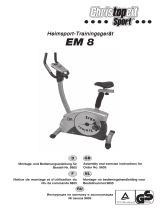 Christopeit Sport EL 8 Owner's manual
Christopeit Sport EL 8 Owner's manual
-
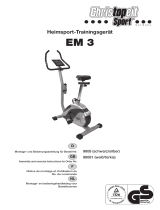 Christopeit Sport MB4 Owner's manual
Christopeit Sport MB4 Owner's manual
-
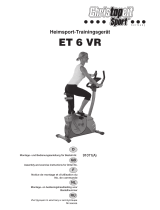 Christopeit Sport ET 6 VR Assembly And Exercise Instructions
Christopeit Sport ET 6 VR Assembly And Exercise Instructions
-
Skandika ErgoMeter User manual
-
Skandika ErgoMeter User manual
-
Crivit 92561t Instructions For Use Manual
-
Hammer 4101 Owner's manual
-
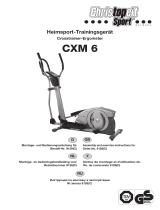 Christopeit Sport CXM 6 Owner's manual
Christopeit Sport CXM 6 Owner's manual
-
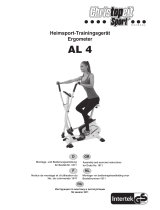 Christopeit Sport AL 4 Assembly And Exercise Instructions
Christopeit Sport AL 4 Assembly And Exercise Instructions





















































































































































